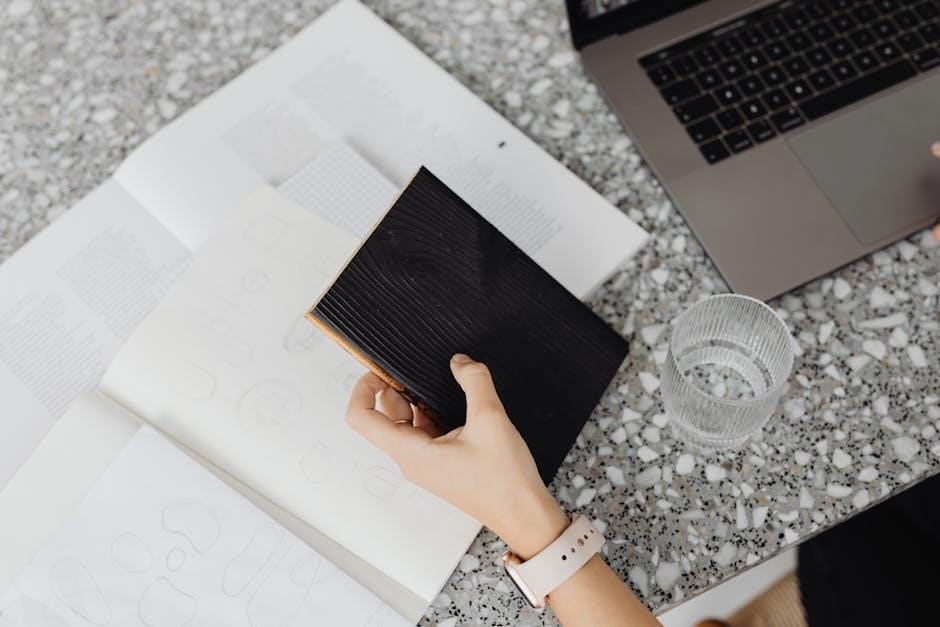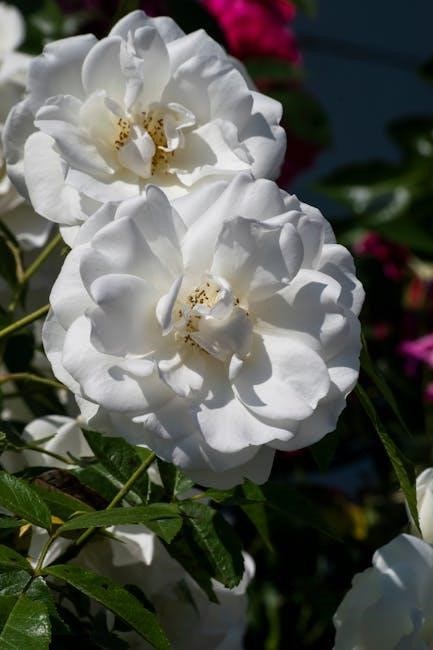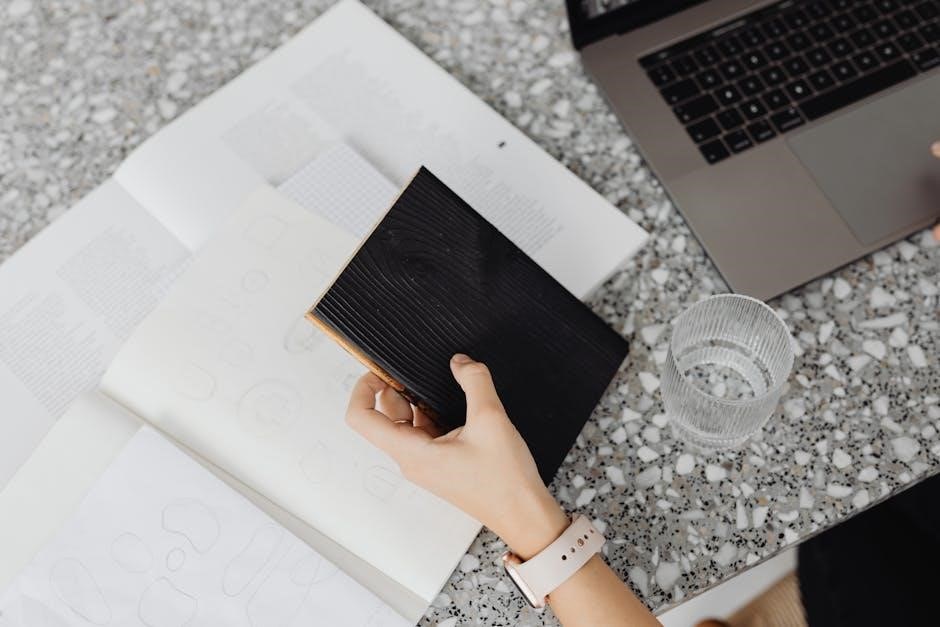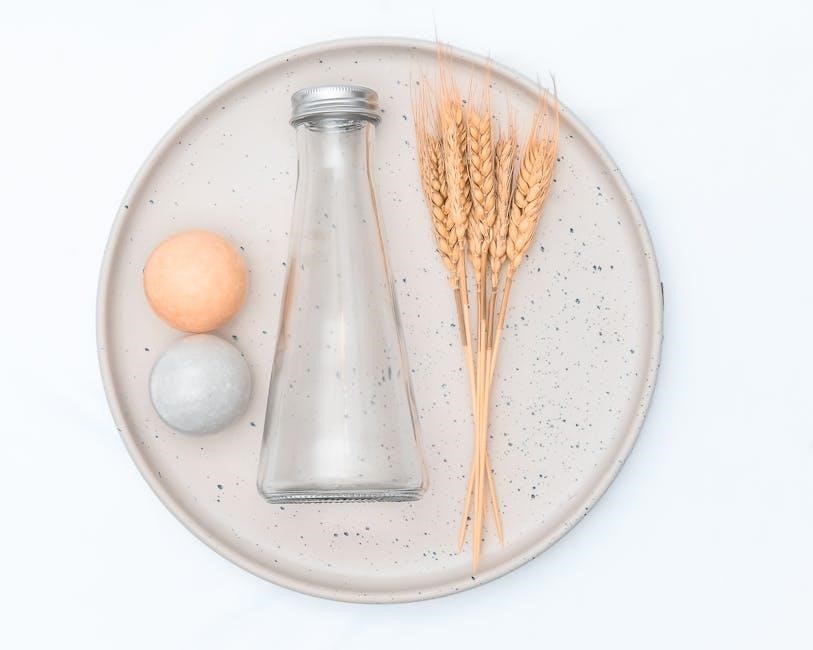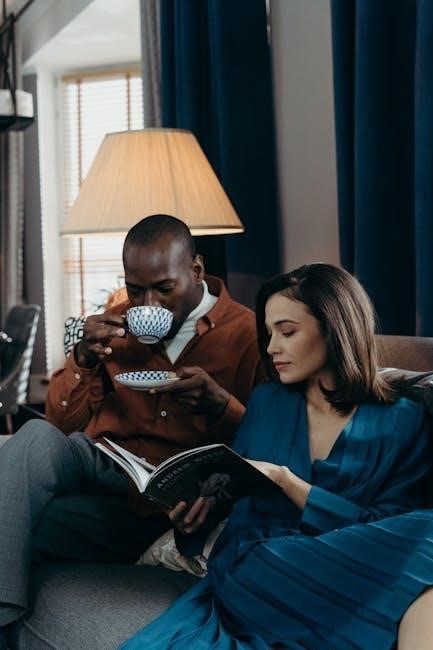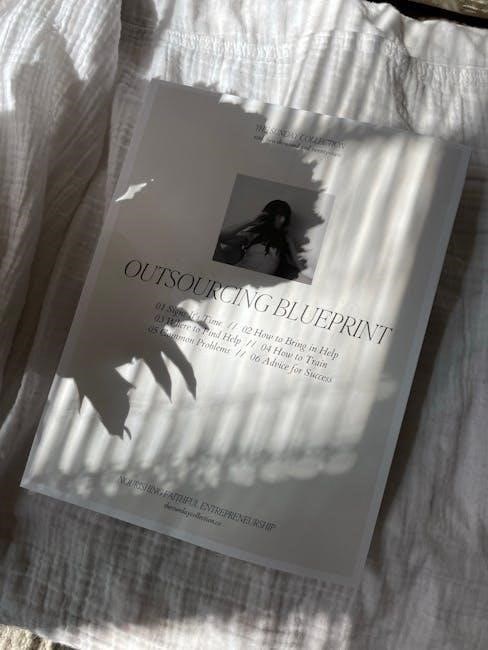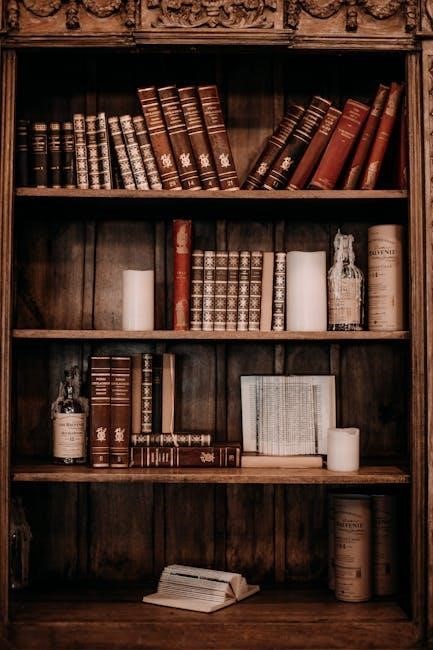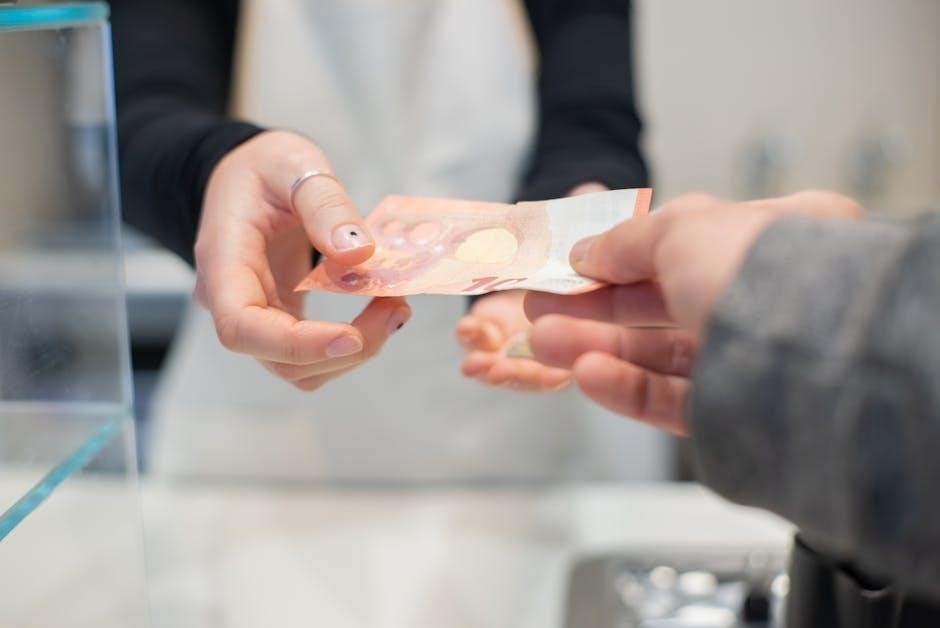“I Love You Lord” is a heartfelt worship song expressing deep affection and surrender to God, inspired by biblical psalms․ It emphasizes joy, thanksgiving, and spiritual connection, resonating globally as a powerful hymn in Christian worship, lifting voices in devotion and inspiring faith communities worldwide․
1․1 Overview of the Song and Its Significance
“I Love You Lord” is a beloved Christian worship song that expresses profound love and devotion to God․ Its simple yet powerful lyrics have made it a favorite in churches worldwide․ The song emphasizes themes of surrender, joy, and spiritual connection, resonating deeply with believers․ Its significance lies in its ability to inspire heartfelt worship and bring communities together in praise․ The lyrics, widely available in PDF formats, continue to uplift and transform lives globally․
1․2 Background and Inspiration Behind the Lyrics
The song “I Love You Lord” is a heartfelt worship hymn inspired by personal devotion and biblical psalms․ Its lyrics reflect a deep connection with God, expressing love and surrender․ Written by Laurie Klein, it has become a global anthem, touching hearts across cultures and languages․ The song’s inspiration is rooted in fostering a personal and communal worship experience, making it a powerful tool for spiritual connection and devotion․

Theological Themes in the Lyrics
The song explores themes of divine love, surrender, and joy, emphasizing God’s faithfulness and mercy․ It reflects a deep spiritual connection, inspiring devotion and trust in Him․
2․1 Expression of Love and Worship for God
The lyrics profoundly express love and worship for God, with phrases like “I love You, Lord” and “lift my voice to worship You,” showcasing deep adoration and surrender․ The song emphasizes rejoicing in God’s presence, seeking to bring joy to Him through heartfelt worship․ This expression is central to the song’s message, creating a powerful connection between the worshipper and the divine, fostering a spirit of humility and devotion․
2․2 Themes of Surrender and Joy in Worship
The lyrics highlight surrender and joy as central themes, encouraging believers to yield to God’s will while finding delight in worship․ Phrases like “take joy, my King” and “let it be a sweet sound” reflect a joyful surrender, emphasizing the transformative power of worship․ This blend of surrender and rejoicing creates a profound spiritual connection, inviting worshippers to experience liberation and happiness in their devotion to God․

Musical Composition and Harmony
The song features a three-part harmony, enhancing the melody’s emotional impact and spiritual depth, creating a powerful worship experience through its uplifting and inspiring musical arrangement․
3․1 The Use of Three-Part Harmony in the Song
The three-part harmony in “I Love You Lord” adds depth and richness to the melody, blending soprano, alto, and tenor voices․ This harmonious structure enhances the emotional expression of the lyrics, creating a powerful and uplifting worship experience․ The interplay of harmonies complements the song’s spiritual message, making it a beloved choice for congregational singing and personal devotion․ The arrangement is both timeless and contemporary, appealing to diverse musical preferences while maintaining its sacred intent and emotional resonance․
3․2 How the Melody Enhances the Spiritual Message
The melody of “I Love You Lord” is uplifting and emotive, perfectly complementing the song’s lyrical themes of love and surrender․ Its soaring phrases mirror the spiritual ascent of worship, creating a sense of joy and intimacy with God․ The simple yet powerful structure allows for heartfelt expression, making the song accessible and deeply moving for listeners․ This melodic arrangement enhances the spiritual message by fostering a connection between the singer and the divine, transcending mere words to touch the heart profoundly and inspire devotion․

Notable Performances and Covers
Moses Bliss and Sunmisola Agbebi’s duet of “I Love You Lord” stands out for its emotional depth and harmony․ Laurie Klein’s rendition also captivates audiences with its heartfelt delivery, showcasing the song’s universal appeal and spiritual impact through diverse interpretations․
4․1 Moses Bliss and Sunmisola Agbebi’s Version
Moses Bliss and Sunmisola Agbebi’s rendition of “I Love You Lord” is a masterful blend of powerful vocals and emotive delivery․ Their collaboration brings depth to the lyrics, infusing the song with raw emotion and spiritual intensity․ The duet’s harmonious balance captivates listeners, creating a worship experience that resonates deeply․ Their version has been widely praised for its authenticity and ability to connect with diverse audiences, making it a standout interpretation of the song․
4․2 Laurie Klein’s Contribution to the Song
Laurie Klein’s contribution to “I Love You Lord” is marked by her soulful and uplifting rendition․ Her voice brings a serene yet powerful interpretation to the lyrics, emphasizing the song’s message of love and devotion․ Klein’s ability to convey emotional depth has made her version a favorite among worshipers․ Her performance highlights the song’s universality, connecting with listeners on a spiritual level and further cementing its place in contemporary Christian music․
Availability of Lyrics and Resources
The lyrics of “I Love You Lord” are widely available in PDF format online․ Websites offer accompanying chords and sheet music for worship teams and musicians․
5․1 Accessing the Lyrics in PDF Format
The lyrics of “I Love You Lord” can be easily accessed in PDF format online․ Many worship websites and platforms offer free downloads of the song’s lyrics, including verses, choruses, and chord charts․ Websites like SongSelect and Gospelmusic provide downloadable PDF versions, making it convenient for worship teams and individuals to access and print the lyrics․ These resources often include chord sheets, ensuring musicians can accompany the song effectively during worship services․
5․2 Where to Find Accompanying Chords and Sheet Music
Accompanying chords and sheet music for “I Love You Lord” are readily available online․ Platforms like SongSelect and Gospelmusic offer downloadable resources, including chord charts, lead sheets, and piano arrangements․ These tools cater to worship teams, musicians, and individuals, providing versatile options for accompaniment․ Additionally, websites like WorshipTogether and UltimateWorshipMusic feature detailed sheet music, ensuring seamless integration into worship services and personal devotion․

Cultural and Global Impact
“I Love You Lord” has become a global worship anthem, resonating across diverse cultures and languages, uniting believers worldwide in heartfelt devotion and spiritual connection․
6․1 The Song’s Popularity in Christian Worship Globally
“I Love You Lord” has become a beloved anthem in Christian worship worldwide, resonating with diverse cultures and languages․ Its simple yet profound lyrics, expressing deep love and surrender, have made it a favorite in churches globally․ The song’s ability to evoke joy and spiritual connection has contributed to its widespread adoption, transcending borders and uniting believers in worship․ Its universal appeal lies in its heartfelt message, making it a staple in congregational worship experiences across the globe․
6․2 How the Lyrics Resonate Across Different Cultures
The song’s universal message of love and worship transcends cultural boundaries, connecting people from diverse backgrounds․ Its simple, sincere lyrics allow for easy translation and adaptation, making it accessible to various cultures․ The themes of gratitude and devotion resonate deeply, regardless of cultural context, fostering a sense of unity and shared spirituality among global audiences․ This adaptability has enabled the song to become a unifying force in worship, bridging cultural divides and inspiring devotion worldwide․

Verse-by-Verse Analysis
The song’s verses beautifully articulate devotion, with each line reflecting a personal and intimate relationship with God, emphasizing love, surrender, and joy in worship, resonating deeply with believers․
7․1 Breakdown of the Chorus and Its Spiritual Depth
The chorus, “I love You, Lord, and I lift my voice to worship You,” encapsulates profound devotion․ Repeating “I love You, Lord” emphasizes unwavering commitment․ The phrase “lift my voice” symbolizes surrender and joy in worship․ The plea for God to “take joy” and hear a “sweet, sweet sound” reflects a longing to please Him, highlighting the chorus’s depth as a heartfelt expression of love and spiritual connection․
7․2 Interpretation of Specific Lines and Their Meaning
Specific lines like “I love You, Lord” emphasize deep devotion, while “take joy my King” reflects trust in God’s faithfulness․ The phrase “let it be a sweet, sweet sound” symbolizes a longing to please God through worship․ These lines highlight a personal, intimate relationship with God, expressing gratitude and surrender․ They serve as a powerful reminder of the transformative power of worship and devotion, resonating deeply with believers seeking spiritual connection and renewal․

The Song’s Role in Worship Services
“I Love You Lord” is a beloved anthem in worship services, inspiring heartfelt devotion and fostering a spirit of surrender․ Its simple yet profound lyrics create an atmosphere of intimacy with God, making it a powerful tool for congregational worship and personal reflection, drawing believers closer to Him through sincere praise and adoration․
8․1 How Churches Incorporate the Song into Worship
Churches often use “I Love You Lord” as a powerful opening hymn or during moments of reflection․ Its simplicity and heartfelt lyrics make it ideal for congregational singing, fostering unity and intimacy with God․ Many churches incorporate it into worship services as a response to sermon messages or during offering, allowing believers to express gratitude and devotion․ The song’s versatility enables worship leaders to adapt it to various styles, from acoustic performances to full-band arrangements, enhancing its emotional impact and spiritual depth․
8․2 Its Effect on Congregational Worship Experiences
The song creates a profound emotional and spiritual connection among worshippers, fostering a collective sense of intimacy with God․ Its heartfelt lyrics inspire believers to express genuine love and gratitude, unifying the congregation in worship․ The uplifting melody and repetitive chorus make it easy for everyone to participate, creating a powerful atmosphere of joy and surrender․ This shared experience strengthens the community’s bond and deepens their spiritual engagement, making it a transformative element in worship services․

The Message of Hope and Redemption
The song conveys a timeless message of hope and trust in God’s faithfulness, emphasizing His eternal love and redemption․ It inspires believers to trust His plan, finding strength in His mercy and grace․
9․1 How the Lyrics Emphasize God’s Mercy and Faithfulness
The lyrics of “I Love You Lord” deeply highlight God’s unwavering mercy and faithfulness, celebrating His love and care․ Phrases like “Take joy, my King” reflect trust in His goodness, while “Oh, my soul rejoice!” expresses gratitude for His faithfulness․ The song underscores a personal relationship with God, built on His mercy, inspiring believers to rely on His promises and find hope in His steadfast love․
9․2 The Song as a Tool for Spiritual Upliftment
“I Love You Lord” serves as a powerful tool for spiritual upliftment, offering hope and renewal through its heartfelt lyrics․ The song’s uplifting melody and sincere words create a deep emotional connection, encouraging believers to reflect on God’s love and mercy․ Its message of trust and surrender resonates deeply, providing comfort and strength․ Many find solace in its reassuring tone, making it a beloved hymn for personal devotion and communal worship, inspiring a closer walk with God․

Artist Collaborations and Live Performances
Collaborations like Moses Bliss and Sunmisola Agbebi’s version highlight the song’s universality, while Laurie Klein’s contribution showcases its versatility․ Live performances deeply inspire audiences․
10․1 Collaborations That Highlight the Song’s Universality
Moses Bliss and Sunmisola Agbebi’s collaboration on I Love You Lord blends powerful vocals and heartfelt delivery, showcasing the song’s global appeal․ Their version resonates with diverse audiences, emphasizing the universality of worship․
Laurie Klein’s contribution brings a fresh perspective, blending genres and styles, further highlighting the song’s adaptability across cultures and languages, making it a unifying anthem for worshippers worldwide․
10․2 The Impact of Live Performances on Listeners
Live performances of I Love You Lord create a profound emotional and spiritual connection with audiences․ The heartfelt delivery and powerful vocals inspire listeners, drawing them into a deeper worship experience and fostering a sense of unity and devotion․
Such performances often lead to moments of personal reflection and renewal, as the song’s message of love and surrender resonates deeply, leaving a lasting impression and uplifting the spirit of all who listen․

The Song’s Influence on Contemporary Christian Music
I Love You Lord has become a cornerstone in modern worship, blending traditional and contemporary styles․ Its simple yet profound lyrics resonate universally, inspiring new compositions and arrangements․
The song’s emotional depth and spiritual authenticity have influenced many artists, making it a timeless piece that continues to shape the future of Christian worship music globally․
11․1 How “I Love You Lord” Fits Into Modern Worship Trends
“I Love You Lord” seamlessly aligns with modern worship trends by blending heartfelt lyrics with simplicity and emotional depth․ Its focus on personal devotion resonates with contemporary Christian music’s shift toward intimate, relatable worship․ The song’s versatility in arrangements, from acoustic renditions to full-band performances, caters to diverse congregational styles․ Its global popularity, as seen in versions by Moses Bliss and Laurie Klein, highlights its ability to transcend cultural boundaries, making it a staple in today’s worship landscape․
11․2 Its Role in Shaping Future Worship Music
“I Love You Lord” is inspiring future worship music by its emotional authenticity and simplicity․ Its ability to blend personal devotion with congregational appeal makes it a model for modern hymns․ Artists are drawn to its heartfelt lyrics, encouraging the creation of similar intimate worship songs․ The song’s global acceptance highlights its universal message, influencing composers to craft music that resonates deeply with diverse audiences, ensuring its legacy in shaping tomorrow’s worship sounds․
“I Love You Lord” stands as a timeless hymn, transcending generations with its universal message of devotion․ Its enduring legacy continues to inspire and unify worshipers globally, ensuring its place in the heart of Christian music for years to come․
12․1 Summary of the Song’s Significance and Impact
“I Love You Lord” is a powerful worship anthem that has resonated deeply with believers worldwide․ Its heartfelt lyrics, emphasizing love, surrender, and joy, have made it a staple in Christian worship․ The song’s ability to transcend cultural and linguistic barriers has solidified its global impact, inspiring countless performances and adaptations․ Its enduring relevance lies in its simple yet profound expression of devotion, making it a cherished tool for spiritual upliftment and communal praise across generations and continents alike․
12․2 Final Thoughts on the Lyrics and Their Message
The lyrics of “I Love You Lord” beautifully encapsulate the essence of worship, love, and surrender to God․ They serve as a timeless reminder of His faithfulness and mercy, inspiring believers to lift their voices in praise․ The song’s universal message transcends cultural boundaries, making it a unifying force in global worship․ Its simple yet profound words continue to uplift spirits, reinforcing the transformative power of worship and devotion, leaving an indelible mark on the hearts of all who encounter it․













